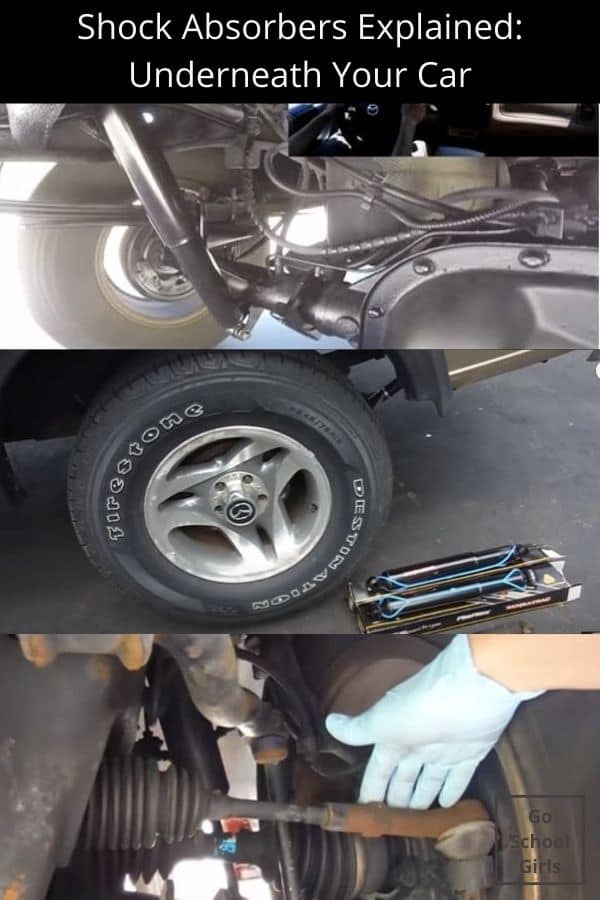Ever wondered how shock absorbers work? Do they really actually absorb the shock? It’s well known that shock absorbers dampen the suspension movement but now let us know how they do it.
Car shock absorbers is a fundamental and most essential component of the suspension. The suspension is made up of all those parts that support the car by connecting the four wheels to the vehicle frame.
But, only very few motorists are aware of the real function of shock absorbers and their great importance for the safety and road grip of the vehicle.
How do car shock absorbers work
Let’s answer these most curious and interesting questions related to shock absorber functions.
YouTuber ChrisFix, explains the key knowledge about the shock absorber through a video, published on his channel.
Watch the below video to know the clear process of shock absorber.
Shock absorbers are not just mysterious and expensive “pieces” for some consumers, which are always discussed with mechanics who want to replace them. In fact, cars are often seen dangerously dominating in a slight hollow due to depleted shock absorbers.
In this video, we see footage of shock absorbers in action under the pick-up car while going over a bumpy road ride, a highway, even during driving in traffic, and speed bumps.
Here is a real comparison of the original shock absorbers that are about 14 years old and the car is driven about 125,000 miles on them with another brand’s new shock absorbers to show the difference.
What Are Car Shock Absorbers For?
Shock absorbers have three main functions:

- Comfort for passengers: They dampen the irregularities of the road, so as not to let them reach the passenger compartment. Shock absorbers prevent the occupants are not affected by the jolts caused by bumps and ditches. Also, take care of all the issues that the tires encounter.
- Driving comfort: Permits the driver to better feel the road and changes in proper directions. This is the reason why there are shock absorbers for sporty driving and suspension customizations.
- Road holding: Especially when cornering and braking, the shock absorber connects the car with the tires, so it supports to distribute the weight of the car between the four wheels, particularly in the most delicate moments during your rides, such as braking and cornering.

A car without shock absorbers will face problems like:
- The passengers would feel every single imperfection of the road.
- It would be completely unmanageable and unstable.
- Without a road-holding grip even dangerous to drive especially when cornering and braking.
How Shock Absorbers Are Made?
The shock absorbers consist of two cylindrical chambers and a piston. The piston slides with difficulty due to the oil contained in the cylinders and it is that resistance that it encounters and allows the shock absorber to attenuate the stresses between the tire and the rest of your car.
The presence of a raised element on the road surface such as bumps, stones, etc causes the wheel to rise and the shock absorbers to compress, forcing the oil contained within it to pass between two chambers through a calibrated passage.
The oil with its resistance opposes the sudden movement, heating up and dissipating the kinetic energy that the road transmits to the shock absorber.
The same thing happens when the wheel meets a hole, the shock absorber extends instead of compressing, in this case, it makes the extension gradually and also reduces the jolt.
Types Of Shock Absorbers
The most common shock absorber is the hydraulic type, consisting of two coaxial cylinders which slide inside each other in an oil bath, connected to the frame by a piston. Outside the system, there is a coil spring. The volume of oil, which serves to dissipate energy and slow down piston sliding, is regulated by various systems.
Other types of shock absorbers are pneumatic (gas), magnetic, and friction shock absorbers.
The first shock absorbers that appeared in the automotive world were the oil ones.
Over time it was realized that the oil produced air bubbles which impair the functioning of the shock absorber.
They have therefore been modified by transforming them into gas shock absorbers. Gas shock absorbers have pressurized inert gas in addition to oil, which solves the problem of bubble formation.Gas shock absorbers are much better than oil ones.
For Maintenance: When To Repair Car Shock Absorbers
- Without getting too technical and complex, the first symptom of an exhausted shock absorber is its excessive softness when driving the vehicle will tend to ‘spring’, sometimes giving the feeling of being on a fairground entertainment.
- When your car doesn’t have contact well on the road, perhaps the shock absorbers need to be repaired. Making maintenance is vital because if the dampers are not working well, then tires on the asphalt do not adhere correctly, resulting in unsafe driving because the tire hopping causes loss of control while driving.
- If the vehicle has covered a good number of kilometers (from 70,000 to 100,000 km) with the same shock absorbers, the answer to the question is quite short: they must be replaced because they have exhausted their life cycle.

ChrisFix: Know About YouTuber
ChrisFix teaches and shows how to fix our own car with some simple and easy techniques, his videos explain every issue with a car step-by-step how to fashion videos for BEGINNERS and EXPERTS as well.
Moreover, his teachings save our hard-earned money, because of his videos we can know how the task is getting done properly, and it makes us feel awesome; as now we can fix our own car without giving a single penny to the mechanics! And after completing the job, you will definitely say thanks to him for sure!
Visit his website Chris-fix for more knowledge about fixing your car.
Thanks and stay tuned 😎
Resources
- ChrisFix YouTube Channel
- How Do Shock Absorbers Work?
- Shock absorbers Wikipedia
